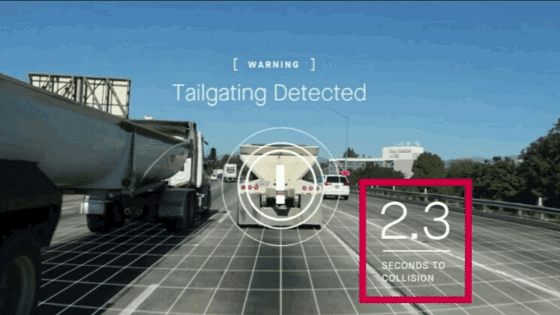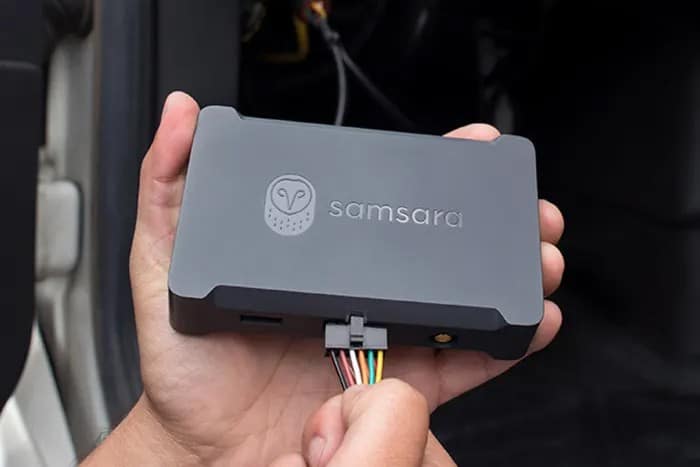Within fleets, technology continues to advance and as a result, drive new benefits. These safety benefits don’t only keep drivers and others safe on the road, but can in fact lower excess costs related to accidents or other driving incidents. At the moment, Advanced Driver Assistance Systems (ADAS) are extremely useful and are only growing in popularity as the technology continues to impress fleets of many sizes. Below we discuss how ADAS systems can lead to improved driver safety, less driving incidents, reduced road collisions, and less dangerous accidents.
What Are Advanced Driver Assistance Systems? Who Is Using This Technology?
As briefly mentioned, ADAS, or otherwise known as Advanced Driver Assistance Systems, are innovative technological systems that help drivers not only keep better control of their vehicles, but drive more safely. As mentioned previously ADAS systems are growing in popularity due to safety benefits. However, it is also worth highlighting how many of the advancements of the technology has resulted from research and development into self-driving cars. This is because much of the advancements look towards automating driving systems and reducing the need of human intervention.
Since benefits relate to improving efficiencies and safety, many fleets are implementing ADAS systems in their drivers vehicles. In fact, a recent 2018 survey found that approximately 40% of all fleets (regardless of size) are using some form of ADAS technology, with 74% of larger fleet sizes consisting of 50 or more Class 8 vehicles adopting the technology.
Types Of Advanced Driver Assistance Systems Used By Fleets
When discussing ADAS systems and fleet use, it’s important to look at the varying ways that fleets of any size can implement the technology. But before diving into the most popular systems, it’s important to note that advanced driver assistance systems can vary from being adaptive, automated, monitoring and warning systems.
Adaptive Systems
An adaptive ADAS system is one that adapts to its surroundings. Meaning that as a vehicle moves throughout an environment, the systems will help provide small adjustments to improve safety. Typically using previously gathered data in relation to its current environmental surroundings. One example of this is the cruise control features in automobiles. Adaptive cruise control (ACC) focuses on using distance sensing technology to detect the space between items or vehicles on the road. In terms of driving, ACC systems focus on using radar or laser sensor technology to not only anticipate the distance of vehicles in front of the automobile it is installed in, but automatically make adjustments in speed to ensure that the proper distance is maintained while driving.
Automated Systems
An automated system is a little more innovative than an adaptive system because it allows for the system to gain control over the vehicle and make adjustments to ensure that safety is met. The system typically takes control of the vehicle when a collision is about to occur. An example of an automated system in vehicles is the automatic emergency braking (AEB) feature. AEB automatically and immediately begins to brake when the vehicle detects that a collision or accident may happen in attempts to avoid it.
Warning Systems
A warning system is exactly what one may assume it to be – a system which alerts drivers of possible risks to safety. This automatic feature consists of in-cab warnings which alert the driver of possible issues in real-time. An example of this is forward collision warning (FCW) which uses real-time data of speed and objects on the road to calculate whether a collision could happen. If the system measures that the distance or angle of an object (including vehicles) ahead could be worrisome at the travelling speed, it will warn the driver of the impending collision.
ADAS Technologies Used By Fleets
Blind Spot Monitoring
This is an innovative feature that has proven itself to be extremely useful not only in the safety it provides, but its average adoption rate of 77.2%. Blind spot monitoring focuses on using not only cameras, but sensors to monitor the space surrounding a vehicle. The technology monitors for objects that are located in the drivers obstructed view (or otherwise known as the drivers blind spot). When objects are detected in the blind spot, the sensor-based monitor can alert the driver that there is something in the not-easily visible area. Many sensor-based blind spot monitors are now built into vehicles at the factory stage of manufacturing via OEM (original equipment manufacturer) initiatives. OEM blind spot monitoring typically consists of exterior cameras at the side or rear of the vehicle.
Forward Video Monitoring
Forward video monitoring is another beneficial feature to implement within fleets of any size as it provides front-facing footage of drivers on the road. Typically, a dash camera is installed in-cab, on windshields to automatically record what is happening ahead of the vehicle. The device then records footage automatically, and typically only stores footage for a short period of time unless an incident is reported. Video monitoring is extremely useful to help provide proof of driving events, lower risky driving behaviour, coach drivers in real-time on errors of judgement, and even relieve drivers from not-at-fault accidents or crash-for-cash scams. Forward video monitoring has not been completely adopted as it is fairly new with an adoption rate of only 52% (many myths surrounding the telematics device could be to blame).
Lane Departure Warning
Lane departure warning (LDW) focuses on notifying drivers on whether it is safe to make lane movements. LDW utilizes video, laser and sometimes infrared sensors to monitor the lane markings on the road. When the vehicle begins to move out the lane without signaling, it automatically alerts the driver of their (sometimes unknown) movement with audio or visual alerts. This feature is impressive because it not only has an average adoption rate of 51.2% in fleets, but has been expanded to include lane keeping assist (LKA) – the technology that helps to ensure that drivers are staying in their lane by taking control of the vehicle if need be.
Air Disc Brakes
Another advanced driver assistance system that is used by fleets are air disc brakes. These brakes are designed to help reduce stopping distance by almost 40% which is extremely attractive for heavy and large trucks (as these types of vehicles often require more time to manually brake). Air disc brakes function by applying braking pressure continuously to allow for the vehicle to come to a complete stop more easily. This technology has an approximate 46.3% adoption rate in fleets.
Collision Avoidance
A wide-ranging category of ADAS technology that has an adoption rate of approximately 44.7% is collision avoidance. While there are numerous collision avoidance technologies, forward collision warning (FCW) and automatic emergency braking (AEB) are the most popular. As previously mentioned, both of these avoidance technologies work to decrease the likelihood of driving incidents involving collisions.
Adaptive Cruise Control
As previously mentioned, adaptive cruise control or ACC, is a technology which utilizes radar and laser sensor innovation to judge, measure and anticipate the distance between the vehicle being driven, as well as surrounding vehicles. ACC focuses on adjusting the travelling speed according to how close or how far forward the system detects a vehicle to be. This ADAS technology has an adoption rate of 39.8%.
Electronic Stability Control
The ADAS technology with the lowest adoption rate that we will mention is electronic stability control (ESC). ESC utilizes sensors to monitor steering control and proactively watch whether the ability to steer will be lost. If steering is lost (sometimes in extreme maneuvers like sudden or sharp turns to avoid collision), ESC will apply individual brakes automatically. Applying the brakes individually to wheels can help course-correct the vehicles movement and in theory prevent the act of ‘spinning out’.
Advanced Driver Assistance Systems
While there are numerous solutions available to help fleets, it’s important to highlight a tool that embodies a number of these features in one solution. This tool is the Samsara AI Dash Camera system which utilizes ADAS technology. Now, in addition to the standard Samsara dashcam features that fleets love, the camera solution will also offer the following:
- Forward collision warning
- Unsafe following distance detection
- Distraction driving detection
AI Dashcams With ADAS Technology Benefits
- Receive multiple ADAS technologies and features in ONE easy-to-install device so you can see real-time results
- Lower the frequency of accidents while increasing the training opportunities
- Decrease the severity of driving incidents
- Lower the costs related to accidents, driving incidents, and repairs
Interested in learning more about Samsara dash camera solutions and their new innovative features? Contact us today!



